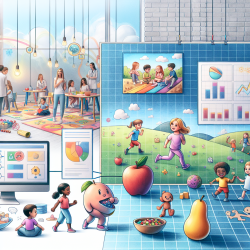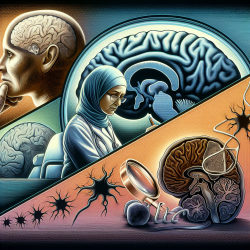Introduction
In the realm of speech-language pathology, creating positive outcomes for children often involves understanding the broader social and emotional contexts that impact their development. Recent research, such as the study titled “Step by Step We Were Okay Now”: An Exploration of the Impact of Social Connectedness on the Well-Being of Congolese and Iraqi Refugee Women Resettled in the United States, provides valuable insights into how social connectedness can influence well-being. This blog explores how practitioners can apply these findings to enhance their skills and improve outcomes for refugee children and their families.
Understanding the Research
The study conducted focus groups with Congolese and Iraqi refugee women in the U.S. to explore their perceptions of belongingness and social connectedness post-resettlement. It highlighted the importance of building strong transformational bonding (with family and other refugees) and bridging (with the host community) relationships. These social connections were crucial for fostering a sense of belonging and well-being among the participants.
Key Findings
- Bonding Social Capital: Relationships with family and fellow refugees provided emotional and practical support, which was essential for coping with the challenges of resettlement.
- Bridging Social Capital: Connections with the host community helped refugees access resources and integrate more effectively into their new environment.
- Linking Social Capital: Interactions with resettlement agencies and social services were vital, although often challenging due to cultural and language barriers.
Implications for Practitioners
For speech-language pathologists working with refugee children, these findings underscore the importance of considering the broader social networks that influence a child's environment. Here are some practical ways practitioners can apply this research:
- Facilitate Family Engagement: Encourage and support family involvement in therapy sessions. Recognize the critical role that family plays in a child's development and well-being.
- Build Community Connections: Help families connect with community resources and support networks. This can include facilitating introductions to local support groups or community centers.
- Enhance Cultural Competency: Develop an understanding of the cultural backgrounds of the families you work with. This can help in building trust and effectively addressing their unique needs.
Encouraging Further Research
The study highlights the need for continued research into the social dynamics of refugee populations. Practitioners are encouraged to contribute to this growing body of knowledge by conducting their own studies or collaborating with researchers. Understanding the nuanced experiences of refugee families can lead to more tailored and effective interventions.
Conclusion
Social connectedness plays a pivotal role in the well-being of refugee populations. By applying the insights from this research, speech-language pathologists can enhance their practice and contribute to better outcomes for refugee children and their families. Embracing a holistic approach that considers the social and cultural contexts of these families can lead to more meaningful and lasting impacts.
To read the original research paper, please follow this link: “Step by Step We Were Okay Now”: An Exploration of the Impact of Social Connectedness on the Well-Being of Congolese and Iraqi Refugee Women Resettled in the United States.










